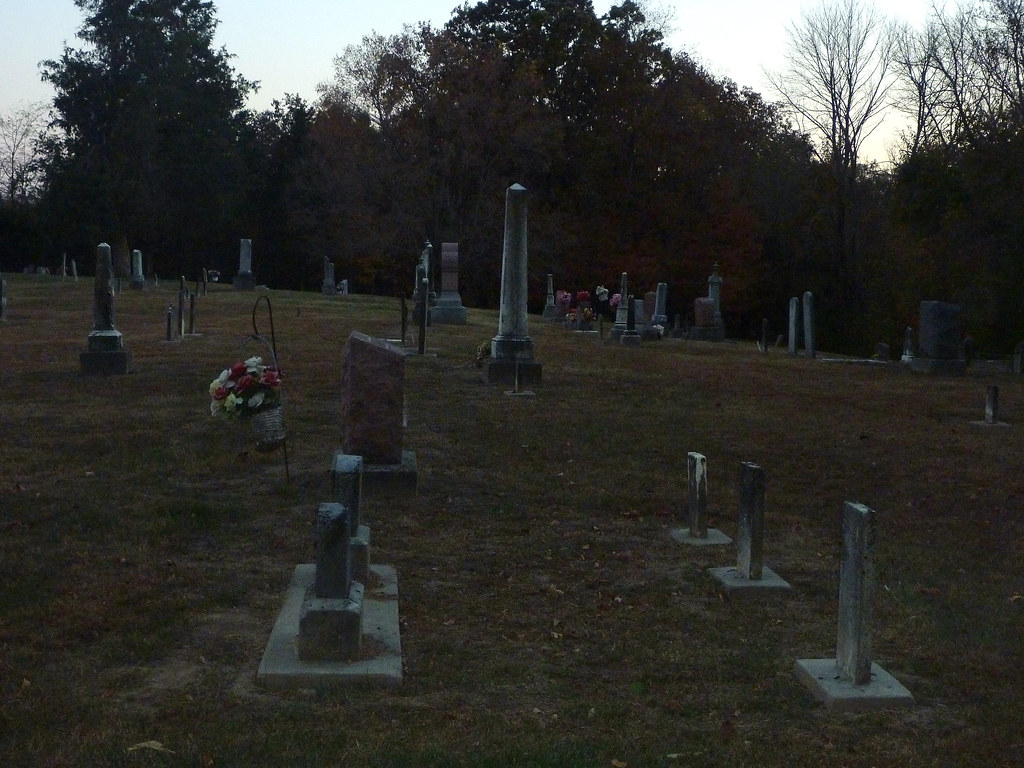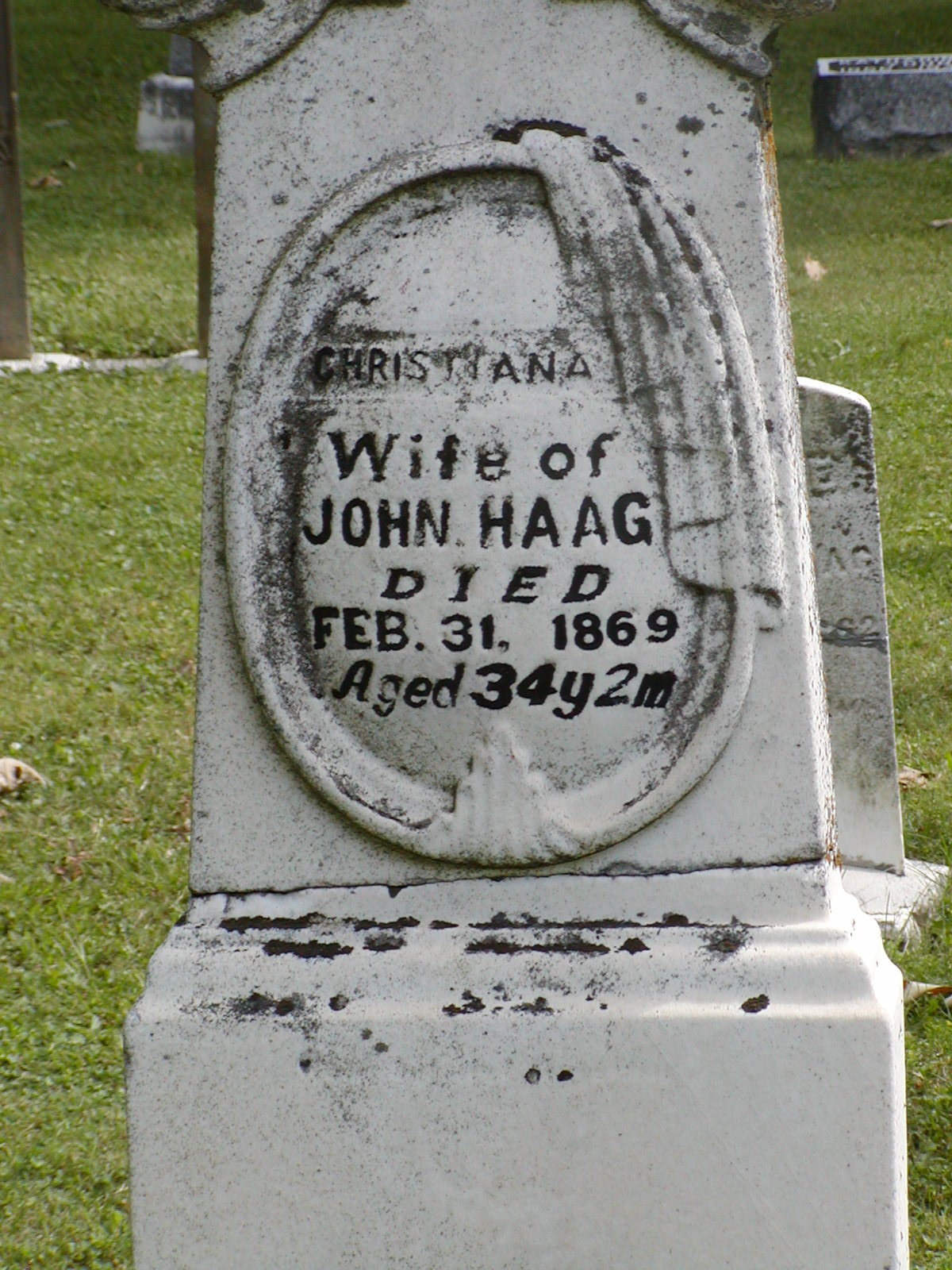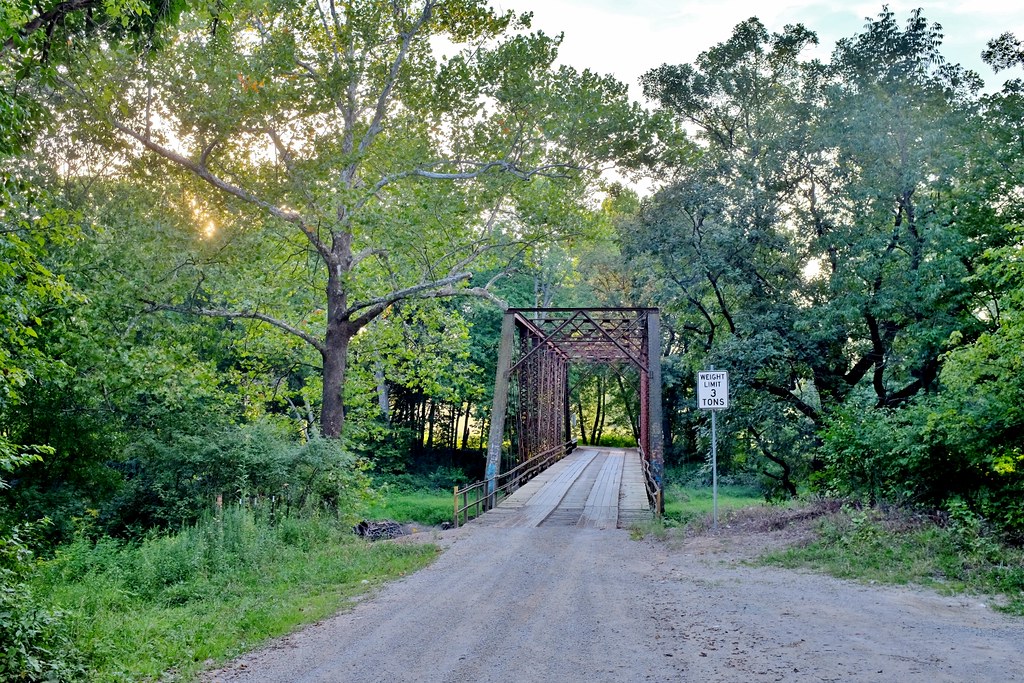St. Omer Cemetery and Airtight Bridge
February 31st. A date that doesn’t exist. Yet, it was so callously inscribed upon the elaborate tombstone of “The Witch of St. Omer.” Rumored to have been written as a preventative measure to ensure that the horrors of witchcraft could not ransack the small town of St. Omer ever again. If a date does not exist, then such a wretched soul cannot return every year to torment the living. Nestled deep in the maze of Coles County’s backwater country roads, Caroline Barnes rests beneath a crystal ball-shaped monument. A reported witch and bane to the survival of the small Illinois village. The settlement did not survive past the 1880s, and many nearby locals say Barnes was to blame. Her grave is not far from Airtight bridge, the sight of a grizzly murder in the 1980s. The bridge is now known as one of the most haunted spots in the county, where the wind mysteriously does not blow. Many odd happenings occur at the witch’s grave; items of an occult nature are often found near the ethereal tomb. It has become a meeting place for members of various unknown organizations and cults. Read more on the history of the cemetery below.
The Town of St. Omer

Source: Flickr
How does a date not exist? What does that mean for the fabric of our society? The fragile existence of time, a mirage already defined by perceived boundaries, offers many mysteries to mankind. Legend states the date was inscribed to prevent the witch’s soul from returning on the anniversary of her death. Skeptics of this legend claim that the inscribers simply had no point of reference due to the prior death of the entire Barnes family. The Barnes had been one of the original settlers of the small community known as St. Olmer, previously referred to as Cutler’s Settlement. It settled in 1834, in the deep timberlands of the midwest, by an Ohioan named John Cutler. It was renamed St. Omer in 1854., after the 7th century French Saint, Saint Audormar or St Omer. A town in Northern France where he was once bishop also shares his namesake. However, by the late 1880s, the small town was no more. The railroad lines made their way through Illinois, and many early settlements folded up as people moved toward the new form of transportation.
The Barnes family were some of the first settlers of St. Omer. Originally from Kentucky, Granville Barnes settled in the area, likely around the time he married Sarah Welch in 1852. Their son Marcus was born in 1857 in a tiny town. It would host no more than fifty families at its height. He would marry Caroline Prather, from nearby Edgar, Illinois, in the late 1870s. The two of them had two children before tragedy struck. Marcus would die in a sawmill accident in December of 1881. Quickly followed by the successive deaths of Caroline and Granville in February and March of 1882. Some believe that foul play was involved due to the quick succession of deaths and that Caroline was to blame. Local legends state that she was tried as a witch but would not die at the noose. She was then buried alive. To ensure that her spirit remains in the ever after, her grave was marked as February 31st, 1882
Dates That Never Existed
Many claim photographs of her will not develop. The odd crystal ball-shaped tombstone, where both she and Marcus lay, is often used as a shrine. Candles, wax, coins, and other weird offerings are usually found in the vicinity, seemingly all because of a made-up date. No written records exist documenting any trails taking place in the area. While it is unfortunate that most of the Barnes family passed simultaneously, it was not uncommon. A harsh winter and bad crops could have been contributing factors. Diseases such as Tuberculosis and Yellow Fever were rampant in the late 19th century. In reality, Caroline died of Pneumonia at the age of twenty-four, a common sickness during the cold winter months. So why does the legend persist? The small town would burn out of existence in the 1950s. The last remaining structures were an abandoned church and schoolhouse on the Barnes family land. No written records exist of St. Olmer, which creates something of an enigma around Caroline and her death. This, and the date upon her tombstone, keeps the legend alive.

Another example of February 31st on a tombstone
Source: Wikimedia Commons
February 31st is common, although infrequently, used on gravestones to indicate the lack of an approximate death date. Some grave sites have the rare honor of having signifying two death dates. For example, in Marblehead, MA, at the Old Burial Hill Cemetery, the tomb of a woman named Elizabeth Waters reads “Deceased: February 10th, 1698/9.” While Massachusetts is the home to the original witch hunt, which US Ghost Adventures has written extensively about, there are no tales of this woman being a witch. This Puritan pilgrim died during a time when the world was switching calendars—changing our perception of time permanently! The old Julian Calendar was causing complications due to its 365.25-day year. Creating chaos in the human mind as the season changed and constantly shifted Easter to different dates. The Gregorian calendar was introduced in 1582 by Pope Gregory XIII, and ten days were wiped from the month of October. Dates that never truly existed!
Airtight Bridge
Many Protestant nations did not adopt the new Catholic calendar until much later, and England officially adopted its usage in 1752. This wiped dates from the calendar and led to the irregular dates we see on some tombstones today. In the case of Caroline Barnes, it appears that simply no one was around at the exact date of her death. Her grave continues to gather macabre visitors regardless.

Airtight Bridge
Source: Flickr
Sadly enough, not far from the ghost town of St. Omer is the sight of another unaccounted death. In 1980, Airtight Bridge became the sight of a grizzly crime scene when a woman’s headless and appendage-less body was found; floating in the creek below. Her identity remained unknown until 1992, as DNA testing allowed for identification. However, Thomas Small, her husband and murderer, was not arrested until 2017. After a decades-long investigation. It appears her death was due to some lover’s quarrel. Involving large amounts of domestic abuse. Diane’s spirit remains restless below the bridge. Many cars stall out atop the bridge, cold spots develop quickly, and as its moniker states, no wind blows atop Airtight Bridge. The deep country backroads of the American Midwest hold many such tales. Continue your journey with us at US Ghost Adventures to find out more.
Sources:
Featured Image Source:Flickr
http://scihi.org/gregorian-calendar/
http://www.oldburialhill.org/pond/pond_cluster_01a.html
https://michaelkleen.com/2021/06/22/the-st-omer-witchs-grave/
https://mysteriousheartland.com/ghost-towns-of-coles-county/
https://www.onlyinyourstate.com/illinois/ghost-town-cemetery-il/
https://mysteriousheartland.com/the-st-omer-witchs-grave/
https://sites.rootsweb.com/~ilcoletp/history/history_of2/early_settlements.htm
https://www.catholic.org/saints/saint.php?saint_id=4906
https://www.findagrave.com/memorial/52843861/granville-anderson-barnes
https://www.myheritage.com/names/granville_barnes
https://web.archive.org/web/20181219214313/
http://www.swampyacresfarm.com/wordpress/tag/february-31-on-gravestone/



